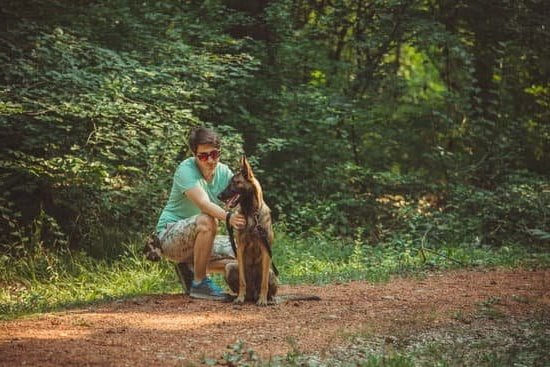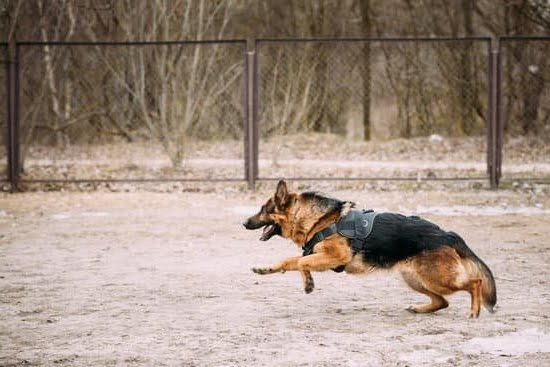Are you wondering how to train your dog to walk on a leash? Leash training is a crucial skill that every dog owner should work on with their furry companion. It not only ensures the safety of your dog but also the people and other animals around them. In this article, we will explore the fundamental aspects of leash training and provide valuable tips on how to successfully train your dog to walk on a leash.
Leash training is more than just teaching your dog to walk beside you without pulling. It also establishes a bond between you and your pet, gives them mental stimulation, and provides physical exercise. Understanding the importance of leash training for dogs is an essential first step in creating a positive and enjoyable experience for both you and your canine friend.
To begin, we will discuss the selection of the right leash and collar for your dog. Different dogs have different needs, so it’s important to choose the appropriate gear that suits both their size and temperament. Understanding your dog’s behavior and body language is also crucial in effectively communicating with them during leash training. By establishing a strong foundation in these areas, you can then move onto positive reinforcement techniques, which are key to successful leash training.
Selecting the Right Leash and Collar for Your Dog
When it comes to leash training your dog, selecting the right leash and collar is key to successfully teaching your furry friend to walk on a leash. There are various types of leashes and collars available, so it’s important to choose the ones that best suit your dog’s size, breed, and temperament.
Here are some tips on selecting the right leash and collar for your dog:
1. Consider your dog’s size and strength: For smaller dogs, a lightweight and shorter leash may be more suitable, while larger or stronger dogs may require a longer or thicker leash for better control.
2. Choose the right material: Leashes come in various materials such as nylon, leather, or chain. Consider factors such as durability, comfort, and ease of cleaning when choosing the material for your dog’s leash.
3. Selecting the appropriate collar: There are different types of collars available, including flat collars, martingale collars, choke chains, and harnesses. It’s important to select a collar that fits well and is comfortable for your dog.
Understanding the different options available for leashes and collars will help you make an informed decision based on what suits your dog’s needs best. Once you’ve selected the right leash and collar for your dog, you can then move on to the next stage of leash training – understanding your dog’s behavior and body language to effectively communicate with them during their training sessions.
By taking these considerations into account when choosing a leash and collar for your dog, you can ensure that they are comfortable during their walks while still maintaining control. The right equipment can make all the difference in how successful you are in training your dog to walk on a leash.
Understanding Your Dog’s Behavior and Body Language
Why Understanding Your Dog’s Behavior Matters
Before you can effectively train your dog to walk on a leash, it is crucial to understand your dog’s behavior and body language. Dogs communicate through their actions and body language, and being able to interpret these signals will help you better understand how to train them.
When you are aware of your dog’s behavior patterns, you can anticipate their reactions in different situations, making it easier to handle them while on a leash. Additionally, understanding your dog’s behavior will allow you to tailor your training techniques to suit their individual needs, ensuring a more successful leash training experience.
Recognizing Stress and Anxiety in Dogs
One essential aspect of understanding your dog’s behavior is being able to recognize when they are feeling stressed or anxious. Signs of stress in dogs can include panting, pacing, drooling, trembling, or avoiding eye contact. As a responsible pet owner, it is important to be attuned to these signs so that you can take necessary measures to alleviate any discomfort during leash training.
By being aware of your dog’s body language and cues, you can make adjustments as needed during the training process. This knowledge will help create a more positive experience for your furry companion as you work towards teaching them how to walk on a leash without fear or anxiety.
Building Trust Through Communication
Understanding your dog’s behavior also involves building trust through communication. By observing their body language and responding appropriately, you can establish a stronger bond with your pet. This bond is crucial for successful leash training because it fosters an environment of cooperation and understanding between you and your dog. When there is trust and clear communication between the two of you, it becomes much easier for them to learn
Positive Reinforcement Techniques for Leash Training
When it comes to leash training your dog, positive reinforcement is key. This means rewarding your dog with treats, praise, or toys when they exhibit the desired behavior of walking nicely on a leash. It’s important to always use positive reinforcement during training and avoid any form of punishment, as this can lead to fear and aggression in your dog.
One effective positive reinforcement technique is to use high-value treats that your dog loves. When your dog walks nicely on the leash without pulling or lunging, immediately give them a treat along with enthusiastic praise. This will help them associate good behavior with receiving rewards, making them more likely to repeat that behavior in the future.
Another positive reinforcement technique is to use a clicker during leash training. When your dog walks calmly beside you on the leash, click the clicker and then give them a treat. The sound of the clicker becomes a marker for their good behavior, making it easier for them to understand what they are being rewarded for.
| Positive Reinforcement Technique | Description |
|---|---|
| Clicker Training | Using a clicker as a marker for good behavior |
| Treats and Praise | Rewarding your dog with treats and enthusiastic praise |
By using these positive reinforcement techniques consistently and patiently, you can effectively train your dog to walk on a leash without any pulling or unruly behavior. Remember that every dog is different, so be patient and stay consistent with your training approach.
Teaching Your Dog to Walk Beside You
Using Positive Reinforcement Techniques
One of the most effective ways to teach your dog to walk beside you is through positive reinforcement. This involves rewarding your dog with treats, praise, or toys when they walk calmly by your side. Whenever your dog starts to pull on the leash or get ahead of you, simply stop walking and wait for them to come back to your side.
Once they do, reward them with a treat and continue walking. Over time, your dog will associate walking next to you with positive rewards.
Using Verbal Cues and Commands
Another important aspect of teaching your dog to walk beside you is using verbal cues and commands. Start by teaching your dog a specific command, such as “heel” or “let’s go,” that signals them to walk beside you. Use this command consistently during walks and reward your dog when they respond correctly. With consistent practice, your dog will learn to associate the command with walking by your side.
Being Patient and Consistent
Finally, it’s important to be patient and consistent when teaching your dog to walk beside you. Leash training takes time and effort, so don’t get frustrated if progress is slow at first. Be consistent with your training methods and practice regularly with your dog. With patience and persistence, you can successfully teach your dog to walk calmly by your side during walks.
By using positive reinforcement techniques, verbal cues and commands, and being patient and consistent in your training efforts, you can effectively teach your dog how to walk beside you on a leash. Remember that every pet is different so be sure to tailor these techniques based on what works best for yours.
Handling Distractions and Encounters During Leash Training
When it comes to leash training your dog, it’s crucial to be prepared for distractions and encounters that may occur during walks. Whether it’s other dogs, squirrels, or even just a noisy car passing by, these distractions can make leash training challenging. However, with the right approach and mindset, you can effectively handle these situations and continue making progress with your dog’s leash training.
One important aspect of handling distractions during leash training is to remain calm and composed. Dogs are incredibly perceptive animals and they can pick up on their owner’s emotions. If you become tense or anxious when a distraction occurs, your dog is more likely to become agitated as well.
Instead, try to stay relaxed and in control of the situation. Use your body language and tone of voice to convey a sense of confidence to your dog, reassuring them that everything is okay.
In addition to maintaining a calm demeanor, it’s also helpful to have some basic obedience commands in place before tackling distractions during leash training. Commands such as “sit,” “stay,” and “leave it” can be extremely useful when trying to redirect your dog’s attention away from a tempting distraction.
By practicing these commands in various environments and gradually increasing the level of difficulty, you can build your dog’s impulse control and responsiveness, making it easier for them to focus on walking calmly on the leash.
| Distraction Handling Tips | Obedience Commands |
|---|---|
| Remain calm and composed | “Sit” |
| Use body language and tone of voice | “Stay” |
| Practice basic obedience commands in various environments | “Leave it” |
The Do’s and Don’ts of Leash Training
Leash training is an essential skill for any dog owner, as it allows you to safely take your dog for walks and outings. However, it’s important to understand the do’s and don’ts of leash training in order to effectively teach your dog how to walk on a leash.
One of the most important do’s of leash training is to use positive reinforcement techniques. This means rewarding your dog with treats, praise, or toys when they exhibit the desired behavior, such as walking calmly beside you.
Positive reinforcement helps to create a strong association between good behavior and rewards, making your dog more likely to repeat that behavior in the future. On the other hand, it’s important to avoid using punishment or negative reinforcement during leash training, as this can create fear and anxiety in your dog and actually make leash training more difficult.
Another important do of leash training is to be patient and consistent. Teaching your dog how to walk on a leash takes time and practice, so it’s important not to get frustrated if progress seems slow. Consistency is also key – try to use the same commands and techniques every time you go for a walk with your dog, so they learn what is expected of them.
When it comes to the don’ts of leash training, one important rule is not to yank or jerk on the leash. Doing so can cause discomfort or pain for your dog, and may also lead them to associate the leash with negative experiences. Instead, focus on using gentle guidance and positive reinforcement to encourage the behavior you want. Additionally, it’s important not to allow your dog to pull on the leash during walks.
If they start pulling ahead, simply stop walking and wait for them to come back towards you before continuing. This teaches them that pulling on the leash does not get them where they want to go. Following these do’s and don’ts will help you effectively train your dog how to walk on a leash in a way that is safe and enjoyable for both of you.
Troubleshooting Common Leash Training Problems
Leash training your dog can sometimes come with its fair share of challenges. From pulling on the leash to becoming easily distracted, there are common problems that many dog owners face when trying to train their furry companions to walk properly on a leash. In this section, we will explore some of the most common leash training problems and provide some effective solutions for addressing them.
One common issue that many dog owners encounter during leash training is their dog’s tendency to pull on the leash. This can make walks frustrating and even dangerous if not addressed properly. To combat this problem, it’s important to start by teaching your dog basic obedience commands, such as “heel” or “stay.” Using positive reinforcement techniques, such as treats or praise, can also help encourage your dog to walk alongside you without pulling on the leash.
Another common problem during leash training is when dogs become easily distracted or agitated by other animals or people while walking. This can lead to erratic behavior and can make it difficult to maintain control of your dog on the leash.
To address this issue, it’s essential to work on desensitizing your dog to these distractions through gradual exposure and positive reinforcement. Teaching your dog to focus on you and rewarding them for good behavior in distracting environments is crucial for successful leash training.
Lastly, some dogs may exhibit fear or anxiety when wearing a collar or being attached to a leash, making it challenging to train them effectively. In such cases, it’s important to approach the training process with patience and understanding. Gradually introducing your dog to their collar and leash in a positive and calm manner, and using treats and praise to create positive associations, can help alleviate their fears over time.
By implementing these techniques and remaining patient and consistent in your training efforts, you can effectively troubleshoot common leash training problems and set your dog up for success in walking properly on a leash. Remember that every dog is different, so it’s essential to tailor your approach based on your individual pet’s behavior and needs.
Taking Your Leash Training to the Next Level
In conclusion, leash training your dog is an essential skill that not only ensures their safety but also enhances the bond between you and your furry friend. Understanding the importance of leash training, selecting the right equipment, and using positive reinforcement techniques are crucial in the initial stages of training. Additionally, mastering advanced training techniques can take your leash training to the next level and further improve your dog’s behavior on walks.
As mentioned in this article, understanding your dog’s behavior and body language is vital in leash training. By being observant and patient, you can better anticipate their reactions and address any potential issues during walks. Additionally, using positive reinforcement techniques such as treats, praise, and toys can reinforce good behavior and make leash training a positive experience for your dog.
When it comes to handling distractions and encounters during leash training, remaining calm and assertive is key. Practicing controlled socialization with other dogs and people can help your dog become more comfortable and well-behaved on walks. Furthermore, troubleshooting common leash training problems such as pulling or lunging requires consistency and patience to modify these behaviors effectively.
Frequently Asked Questions
How Do I Train My Dog to Walk on a Leash Without Pulling?
Training your dog to walk on a leash without pulling requires patience and consistency. Start by using positive reinforcement to reward them for walking calmly. Use treats or praise to encourage good behavior and redirect their attention if they start to pull.
How Long Does It Take to Train a Dog to Walk on a Leash?
The length of time it takes to train a dog to walk on a leash will vary depending on the individual dog and their responsiveness to training. Some dogs may pick up on leash walking quickly, while others may take more time. It’s important to stay patient and consistent throughout the training process.
How Do I Stop My Dog From Pulling on the Leash When I Walk?
To stop your dog from pulling on the leash when you walk, you can use techniques such as stopping immediately when they start pulling, changing direction, or using a front-clip harness that discourages pulling. It’s also important to ensure that your dog gets enough physical and mental exercise so that they are calmer during walks.
Regular practice and positive reinforcement will also help in teaching your dog not to pull on the leash.

Welcome to the blog! I am a professional dog trainer and have been working with dogs for many years. In this blog, I will be discussing various topics related to dog training, including tips, tricks, and advice. I hope you find this information helpful and informative. Thanks for reading!





